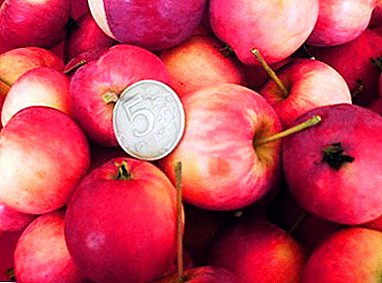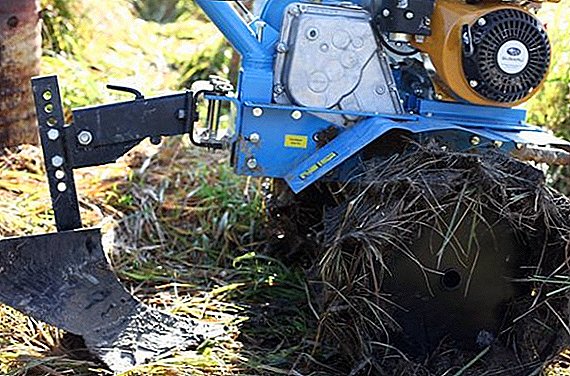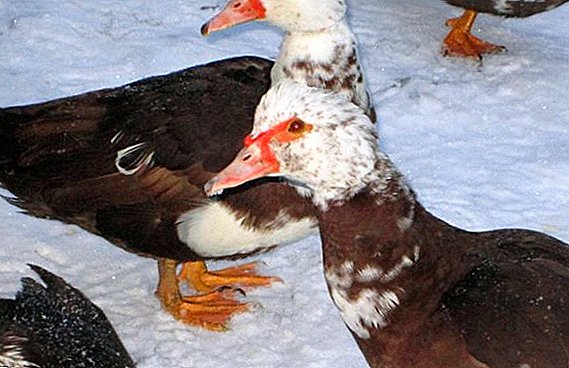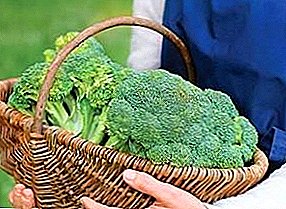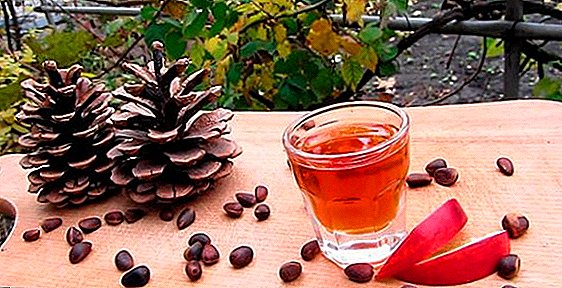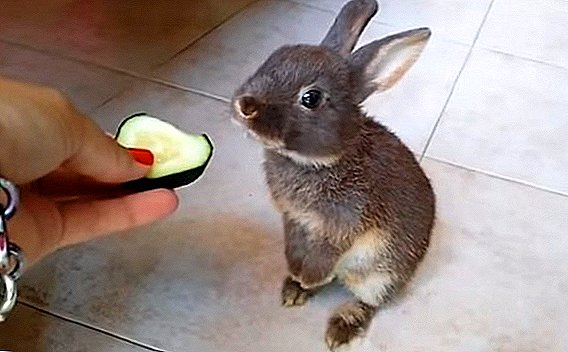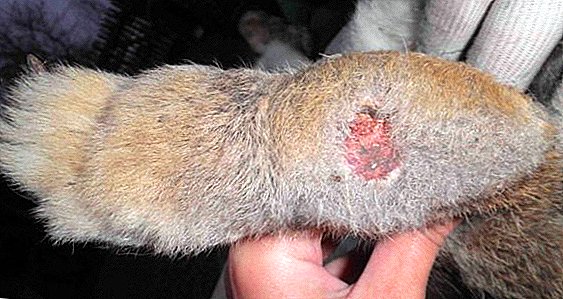 When your rabbit becomes lethargic, restless and refuses to eat, it is worth examining its paws. Appeared calluses and inflammation give the pet great discomfort, can cause hair loss, deep cracks and heavy bleeding. With timely treatment of poddermatitis, you can completely get rid of, and the neglected forms of the disease require surgical intervention and do not always have a successful outcome. How to recognize the problem and how to help eared, about this you will learn further from the article.
When your rabbit becomes lethargic, restless and refuses to eat, it is worth examining its paws. Appeared calluses and inflammation give the pet great discomfort, can cause hair loss, deep cracks and heavy bleeding. With timely treatment of poddermatitis, you can completely get rid of, and the neglected forms of the disease require surgical intervention and do not always have a successful outcome. How to recognize the problem and how to help eared, about this you will learn further from the article.
What is poddermatit
The inflammatory processes that form on the feet of rabbits are called Pododermatitis. This disease is very common and dangerous, since the lack of adequate therapy provokes the development of deep wounds and abscesses that can penetrate to the very bones. In such cases, the death of the animal is inevitable.
Read how to breed fleas and lichen in rabbits.
More often, young people who have reached three months of age, as well as adults suffering from obesity, are exposed to the disease. In some pets, the ailment develops with a clearly pronounced symptomatology and is accompanied by bleeding natopys on the extremities, while in others it manifests itself with small calluses and weak baldness of the affected areas. 
Causes of
The development of corns and calluses in rabbits is accompanied by many factors relating not only to the conditions of detention, the characteristics of the breed, but also the hereditary predisposition of pets. According to veterinarians, the disease most often occurs due to:
- frequent nervous tensions and stresses to which the animal is exposed (when its home is located close to dogs and other predators);
- internal infections (when the pathogenic environment intensively develops in the body, destroying all tissues and fibers);
- neglected forms of other diseases (occurs against a background of low immunity);
- poor nutrition, reducing the protective functions of the body;
- genetic propensity (when, due to the nature of the breed, the paw pads are poorly pubescent);
- excessively long claws, which leads to incorrect setting of the paws;
- dampness, heat and poor lighting (when the room with rabbits is not ventilated and is rarely removed);
- obesity;
- abrupt diet change (when they transfer from a meager pet menu to protein feeds);
- cramped conditions of detention (when the pet has no room for walking);
- mesh floor in the cage (in such constructions the bottom must be covered with a rug);
- non-compliance with health care standards.
 Mesh floor in the cage - one of the reasons for the appearance of poddermatit in rabbits
Mesh floor in the cage - one of the reasons for the appearance of poddermatit in rabbitsStages and stages of the disease
It is important to timely detect inflammation of the limbs in the ward and begin adequate therapy. At the initial stages, poddermatitis is easily treatable and does not recur when the causes of its occurrence are eliminated. Experts identify several stages of the progress of the disease. Consider them in more detail.
To exclude unplanned breeding of rabbits, as well as to reduce aggressive behavior, conduct castration.
Aseptic
It appears without severe pain in the form of serous, serous-fibrinous or serous-hemorrhagic inflammation of the paw pads. On palpation on the limbs of a rabbit, the compacted areas are well palpable, and over time, the down will thin on them. If you eliminate the root cause of natoptyshey, they can go by themselves.  Veterinarians note that at this stage the inflammatory processes affect only the vascular and papillary layers of soft tissues. But the longer this pathology lasts, the more exudate accumulates on the affected areas of the body. As a result, detachment and deformation of the subcutaneous layers occur. Often, a filled capsule rises above the surface of the skin.
Veterinarians note that at this stage the inflammatory processes affect only the vascular and papillary layers of soft tissues. But the longer this pathology lasts, the more exudate accumulates on the affected areas of the body. As a result, detachment and deformation of the subcutaneous layers occur. Often, a filled capsule rises above the surface of the skin.
Acute forms of aseptic poddermatitis are manifested by claudication and a slight increase in local body temperature. Visually, the red corpus callosum, touching which causes pain, is clearly visible on the feet.
Did you know? In Australia, rabbits are recognized as the most destructive pests. It is believed that wild eared cause annual damage amounting to more than $ 600 million, leading to degradation of agricultural land and soil erosion, threaten the survival of many rare species of animals. The maintenance of these animals at home is highly undesirable, and in the state of Queensland since 2002 and completely prohibited. The maximum penalty for violating this prohibition is a fine of $ 30,000.
Chronic disease progression is characterized by less pronounced inflammation and long term. The sole of the animal is characterized by roughness, which occurs as a result of its internal deformation.
Purulent
It occurs when late intervention. If a sick rabbit is not treated at the first stage of development of a poddermatitis, microbes form in the cracks and wounds formed on its feet, resulting in fistulas, sores and bleeding ulcers in a short time.
We recommend you learn how to treat: constipation, flatulence, viral hemorrhagic disease, conjunctivitis, pasteurellosis and scabies in rabbits, as well as familiarize yourself with infectious diseases of rabbits that are transmitted to humans.
Purulent forms of the disease can occur at the superficial or deep levels of the foot, and also have a focal or diffuse character. In all of these cases, veterinarians notice a progressive infection, which leads to tissue death.
Superficial Pododermatitis affects the papillary layers of the epidermis. The accumulated exudate exfoliates the horn sole, which bursts when walking. But the inflammation of the deep subcutaneous fibers is often complicated by corolla cellulitis, an infection of the tendons, joints and periosteum.  In advanced cases, the animal has a strong pain, refusal to eat, fever, apathy. Along the way, diarrhea can develop. Visually, there are bleeding wounds and sores on the feet, swelling of the inflamed skin and purulent discharges.
In advanced cases, the animal has a strong pain, refusal to eat, fever, apathy. Along the way, diarrhea can develop. Visually, there are bleeding wounds and sores on the feet, swelling of the inflamed skin and purulent discharges.
In order to properly organize the care and maintenance of eared animals, it is necessary to become familiar with all the subtleties of breeding rabbits at home.
How and what to treat the rabbits in rabbits
If you do not take any therapeutic measures to combat Pododermatitis, after 4 days the animal can be lost, so it is important to begin an adequate course of treatment at the first symptoms of the disease.
Basic actions
Experienced breeders are advised to immediately eliminate the factors that accompany the development of the disease, and, on the recommendations of veterinarians, to begin antibiotic therapy. Vaccination is also desirable.  During this period, the sick animal is important to ensure peace and proper nutrition. In the future, all actions will depend on the form of the disease:
During this period, the sick animal is important to ensure peace and proper nutrition. In the future, all actions will depend on the form of the disease:
- exacerbation of aseptic corns removed by cooling procedures;
- for purulent inflammations of the feet, thorough cleaning of the skin and subsequent treatment of wounds with 3% hydrogen peroxide or chlorhexidine solution is shown (to prevent recurrence, the procedure should be performed at least 2 times a day);
- to eliminate pathogenic microflora from the body, rabbits are given the antibiotic "Baytril" (the dosage is calculated according to the manufacturer's recommendations);
- for the treatment of bleeding cracks and ulcers, Ksidikol with cortisone and Dermatol will be needed, which will quickly eliminate inflammation and dry the upper layers of the skin;
- in order to prevent pathogenic microbes from penetrating bursting blisters, it is recommended to lubricate the affected areas with the ointment “Rescuer” and “Levomikol”;
- special dressings applied to the paws of the animal will help to enhance the therapeutic effect (they must be changed daily as needed).

Dressing rules
The effectiveness of treatment depends largely on the degree of protection of the wounds of a sick animal. If you do not tie his feet, most likely, the medicine will be licked or smeared when walking. Therefore, veterinarians recommend to impose cotton-gauze bandages on calluses until complete recovery. This should be done strictly following the following rules:
- First calm the rabbit so that he will allow you to carry out your venture. To this end, give him any treat and stroke.
- Caressing, sit the big-eared on your knees and turn over on your spine, so that its head is located between your side and elbow. If the animal is frightened, it should be pressed to itself. Excessively shy individuals are encouraged to wrap in a piece of natural fabric.
- First, clean the wounds from purulent discharge. If the exudate capsule is whole, do not destroy it, but disinfect the superficial inflamed layers with hydrogen peroxide and apply ointment. On top, close the sores with cotton wool.
- Apply a bandage bandage and keep your pet in your hands for 10-15 minutes. Stroke it. This is to ensure that the applied drugs began to act.

Traditional methods of treatment
Many rabbit breeders practice the treatment of Pododermatitis with folk remedies. Among those, the calendula solution is especially popular. It is prepared from 2 teaspoons of herbal extract and 200 ml of warm water.
Read how to use Gamavit, Baytril, Dithrim and Amprolium for rabbits.
The liquid must infuse and cool. After that, the sponges of natural fabric moistened in the preparation are applied to inflamed areas of the sole for 5-10 minutes. Repeat treatment is recommended up to 4 times per day.
Special attention should be paid to the diet of diseased wards. It must be green and juicy food, because they are a source of vital vitamins and minerals. Veterinarians advise to saturate the menu of rabbits with strawberries, blueberries, scalded leaves of young nettle, as well as with plantain and shepherd's purse stalks. 
Possible complications
Complicated forms of poddermatitis in rabbits are possible with deep lesions of the soft tissues of the feet, as well as with infection of cracks and ulcers. This is facilitated by walking and close contact of the affected leg areas with the dirty floor.
In veterinary medicine, the following are credited to the complications of the disease of inflamed feet:
- staphylococcus;
- necrosis;
- abscesses;
- necrobacillosis;
- blood sepsis;
- necrobacteriosis (inflammation of tendons, joints of phalanges, bones);
- neutrophilic leukocytosis.
 All the above diseases for rabbits in the overwhelming majority end lethal.
All the above diseases for rabbits in the overwhelming majority end lethal.Did you know? The rabbit has 28 teeth, and tiny teeth grow behind its front incisors. These animals boast an enviable appetite and eat everything that grows, and in large quantities. In one sitting, an adult rabbit can eat as much grass as is enough to fill a large pillow.
Prevention and hygiene rules
To prevent foot disease in wards, the breeder should:
- Take care of the correct flooring in the rabbitries. Mesh and slatted designs contribute to the appearance of corns and corns. Therefore, this floor is recommended to cover with rubber mats to soften it when walking.
- Daily clean in the cells, changing litter. For rabbits, it is preferable to have a thick layer of soft non-resistant straw or sawdust.
- Each semester to disinfect cells, internal equipment and cleaning equipment.
- Do not allow the animal to walk on asphalt and stone pavement. During the summer period many rabbit breeders are planning a walking area for eared pets on the ground under the rabbitry, enclosing it with a net.
- Watch the diet, enriching it with vitamins and minerals. The menu of the wards must include coarse, juicy and green food.
- Promptly vaccinate animals and monitor their behavior. When the first symptoms of any disease appear, it is important to begin drug therapy.
- Do not overfeed eared and provide them with enough space for active movement.
 Vaccination, as one of the methods of prevention of Pododermatitis in rabbits Pododermatitis is a very common disease, but occurs only in cases where the breeder pays little attention to his wards. If you provide your rabbits with a soft floor, proper nutrition, cleanliness in the rabbitks and an active lifestyle, they will not get sick. We hope our article will help you to timely eliminate all the shortcomings in the content of eared.
Vaccination, as one of the methods of prevention of Pododermatitis in rabbits Pododermatitis is a very common disease, but occurs only in cases where the breeder pays little attention to his wards. If you provide your rabbits with a soft floor, proper nutrition, cleanliness in the rabbitks and an active lifestyle, they will not get sick. We hope our article will help you to timely eliminate all the shortcomings in the content of eared.

